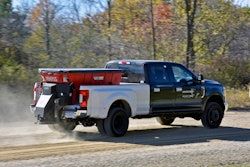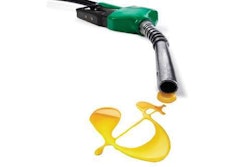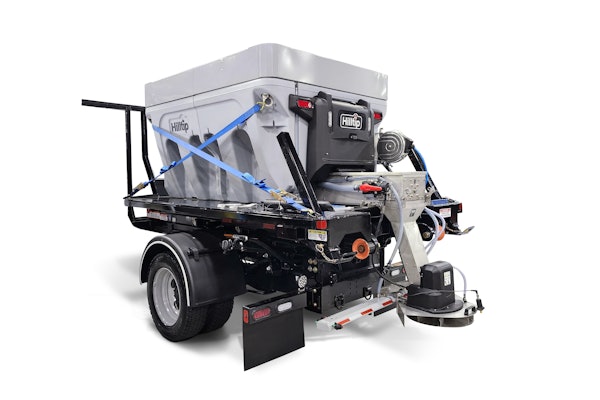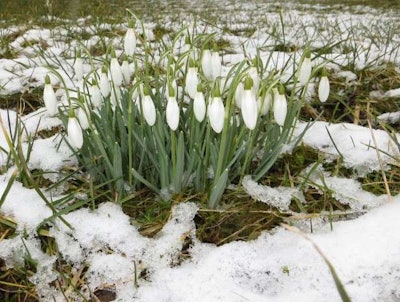 Plants can manage to be beautiful in winter, but the imperative to keep roads and walkways as safe as possible during the coldest months is bad news for plants nearby.
Plants can manage to be beautiful in winter, but the imperative to keep roads and walkways as safe as possible during the coldest months is bad news for plants nearby.Photo: publicdomainpictures.net
De-icing is a necessary evil in areas that receive plentiful amounts of snow. While it makes clearing roads less of a chore, it spells certain damage, if not destruction, for plants near roadways and sidewalks. Plants close to commonly de-iced roads have extra bad luck, as they are exposed to both the salt spray and the salty slush that sinks into the soil.
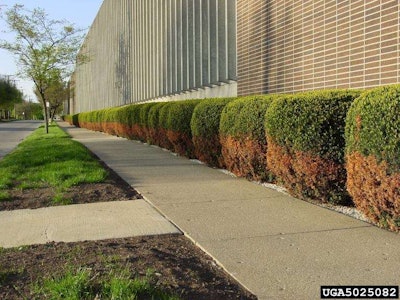 Salt damage to plants because of de-icing, though not pretty, is inevitable, and with repeated exposure, often fatal. (Click to enlarge.)
Salt damage to plants because of de-icing, though not pretty, is inevitable, and with repeated exposure, often fatal. (Click to enlarge.)Photo: J. LaForest, University of Georgia
As the sodium separates from the chloride, it prevents plants from absorbing other nutrients they need and also causes dehydration.
Diagnose it
Salt injury can be difficult to diagnose. Its symptoms are similar to many other causes of plant disease, such as drought stress, nutrient deficiencies, or water-logged soils. If a salt spray is to blame, naturally the side of the plant facing the road will display more damage, such as stunted, yellow foliage or twig dieback.
If the plant is suffering from salt in the soil, it will generally be within 30 feet of the road and its decline may have occurred through repeated years of exposure. Browning and stunted growth are common symptoms that precede eventual plant death.
Prevent it
The best way to combat salt damage is to take preventive measures. The No. 1 option landscape designers and contractors should consider is planting salt-tolerant vegetation in areas that are more likely to be exposed to salt spray or salty soil.
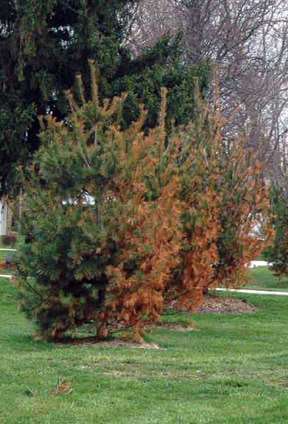 If you live in areas where de-icing services are provided, keep an eye on your plants near the street. There are steps you can take to mitigate the damage.
If you live in areas where de-icing services are provided, keep an eye on your plants near the street. There are steps you can take to mitigate the damage.Photo: Michigan State University Extension
Even after determining the degree of tolerance plants have to aerial salts or salt in the soil, it’s best to keep them at least 60-100 feet back from highways and 30-40 feet away from city streets, according to the University of Wisconsin Extension.
Another way to protect plants from soil salt is to grow shrubs and trees on berms, which keeps their roots safe from saltwater runoff. According to Laura Deeter, professor of landscape horticulture and horticultural science at Ohio State University, landscapers can use a thin layer of mulch to help absorb the rock salt. The mulch should be thrown out in spring and the plants flushed with water.
For the Purdue University Extension’s list of plants and their tolerance of salt spray and soil salt, click here.
Lessen it
If salt is unavoidable, there are not many options for protecting nearby plants, but the best choice is to try to flush the salt away. Should there happen to be a warm spell during the winter, use this time to rinse foliage before spring budding.
In the spring, flush the soil heavily to protect the root zone. This runoff should be directed away from plants. Obviously, this kind of effort is most successful with well-draining soils. Heavy clay soils can be amended with the application of gypsum, which replaces the sodium with calcium.
But, again, the best rule of thumb is to choose salt-tolerant plants near roadways and to use salt alternatives, such as calcium chloride or calcium magnesium acetate, to melt ice without harming plants.


